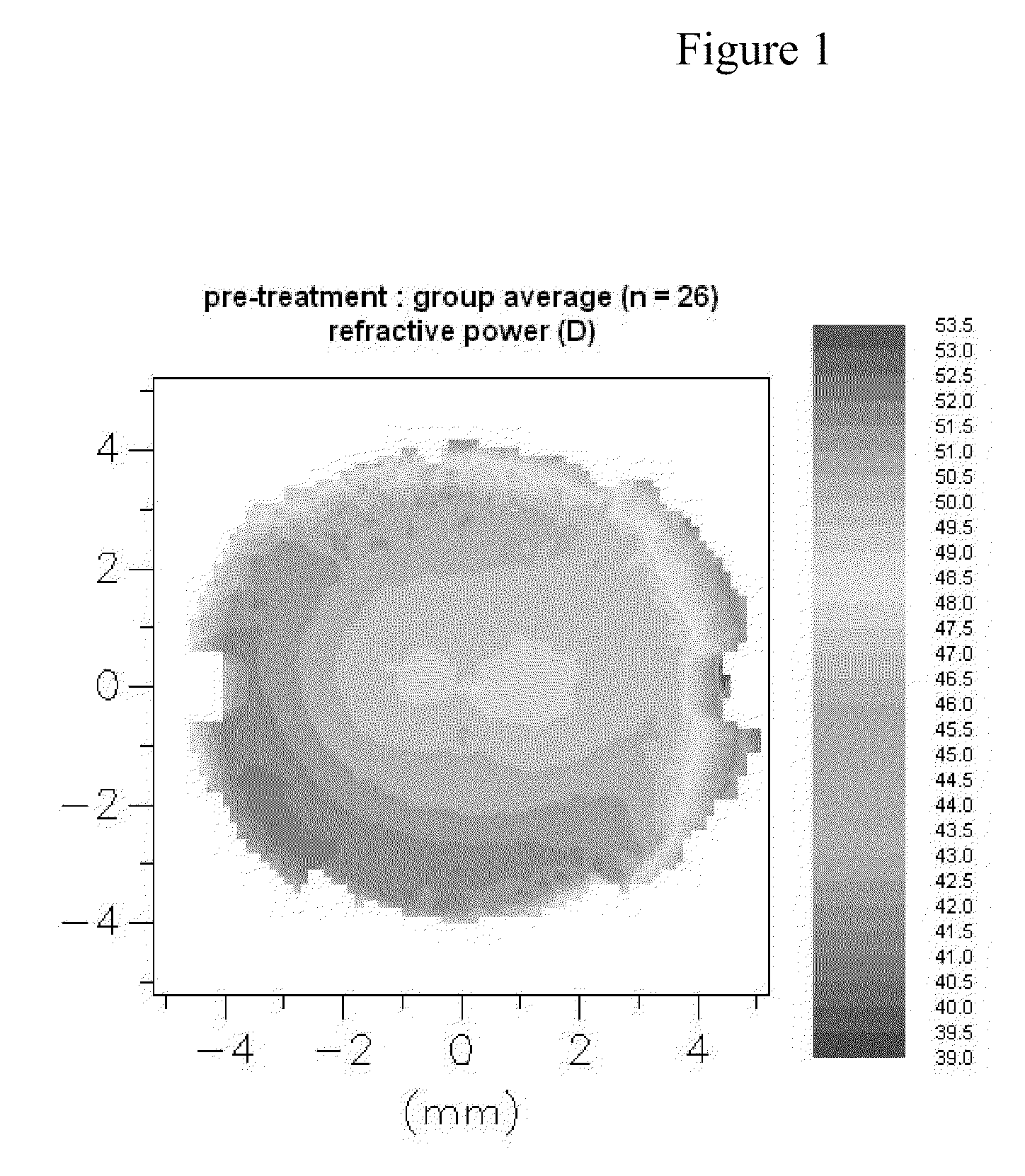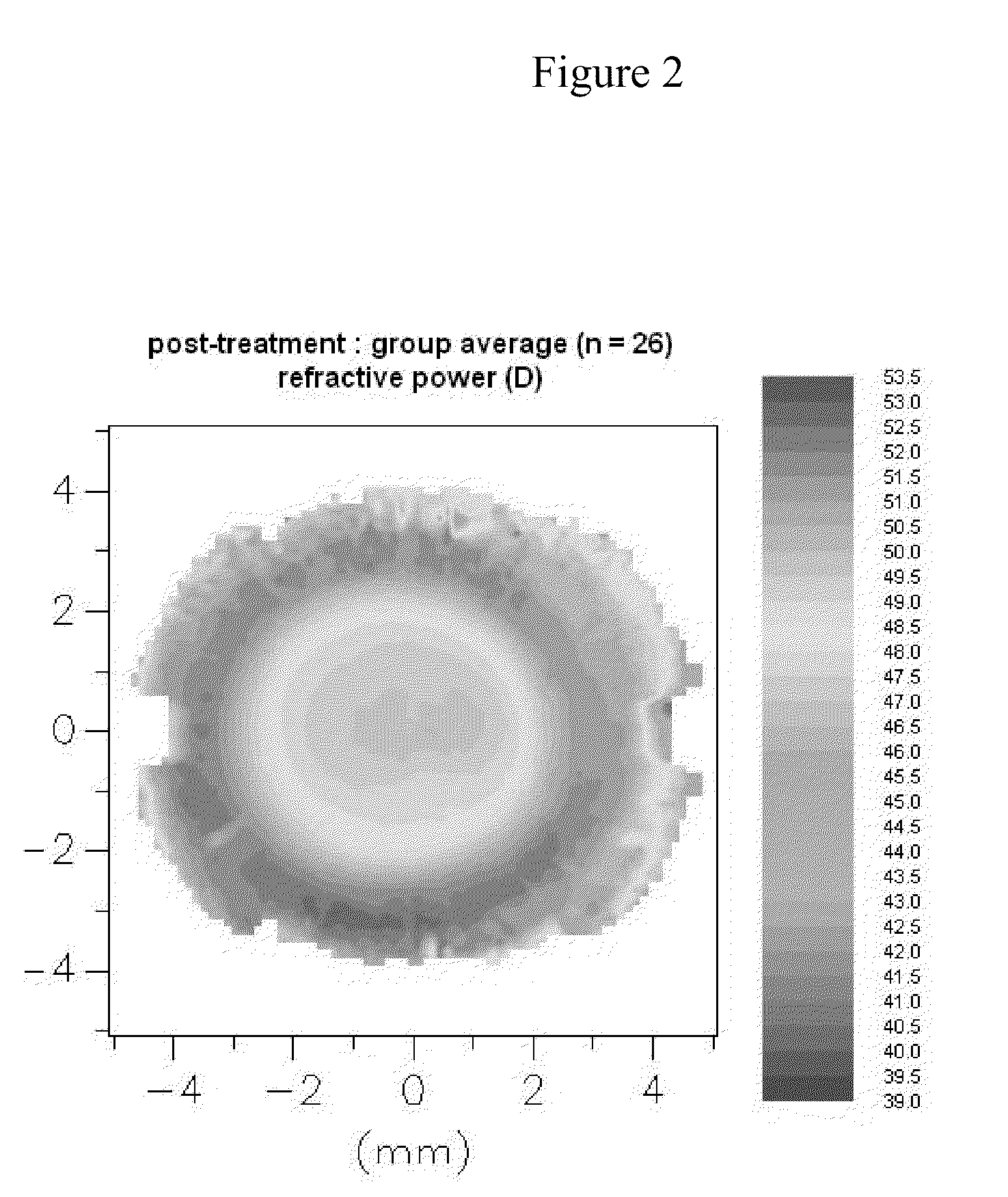Myopia control ophthalmic lenses
a technology of ophthalmic lenses and myopia, applied in the field of myopia control ophthalmic lenses, can solve the problems that the design approach suggested does not seem to address specific wavefront/refractive power characteristics of individual eye/or group average data or changes, and achieve the effect of controlling or slowing the progression of myopia
- Summary
- Abstract
- Description
- Claims
- Application Information
AI Technical Summary
Benefits of technology
Problems solved by technology
Method used
Image
Examples
example 1
Prophetic
[0100]In a longitudinal study comparing the axial length (eye growth) and auto-refraction of an age matched pediatric population of subjects aged 6 to 14 yrs old, contact lenses produced according to the method and design of the present invention are fitted to one group while a control group wears conventional contact lenses or spectacles. The first group receives lenses according to the following lens design and optical power profile described herein.[0101]a) The optical power in the central disc of the optic zone is substantially constant;[0102]b) the optical power in the first annulus at about a diameter of 4 mm increases in plus power to a range of +0.5 to +1.5 D, with a preferred value of about +1.0 D, at a diameter of 6.5 mm increases in plus power to a range +1.5 to +4.5 D, with a preferred value of about +3.4 D;[0103]c) the optical power in the second annulus decreasing from the power found at the edge of the first annulus to a power between +1.5 and +4.5 D, with a ...
PUM
 Login to View More
Login to View More Abstract
Description
Claims
Application Information
 Login to View More
Login to View More - R&D
- Intellectual Property
- Life Sciences
- Materials
- Tech Scout
- Unparalleled Data Quality
- Higher Quality Content
- 60% Fewer Hallucinations
Browse by: Latest US Patents, China's latest patents, Technical Efficacy Thesaurus, Application Domain, Technology Topic, Popular Technical Reports.
© 2025 PatSnap. All rights reserved.Legal|Privacy policy|Modern Slavery Act Transparency Statement|Sitemap|About US| Contact US: help@patsnap.com



